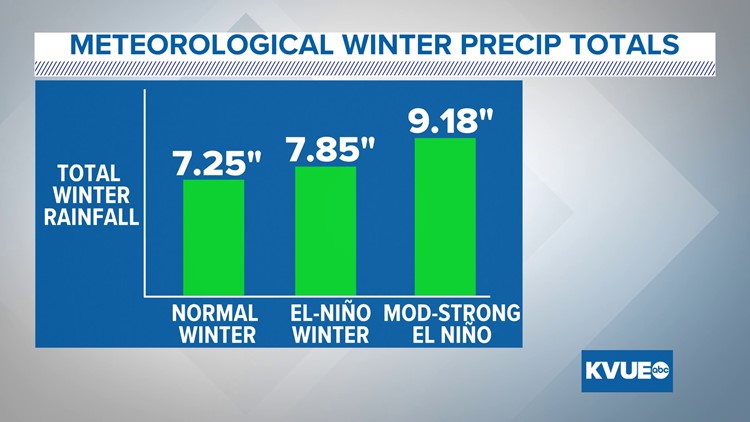AUSTIN, Texas — This October brought 7.15 inches of rainfall to Austin, making it the wettest October since 2018. As it turns out, the fall and winter of 2018-2019 was the last time El Niño conditions were present in the Pacific.
We expect El Niño to continue being a guiding factor in our rainfall outlook for this upcoming winter, and for this reason, we are expecting wetter-than-normal conditions in Central Texas.
El Niño refers to warmer-than-average waters in the east-central equatorial Pacific as the result of weak trade winds. This can have a big influence on the weather right here in Central Texas, especially during the fall and winter. El Niño promotes a more active Pacific jet stream over the state of Texas, and this tilts the odds towards wetter-than-normal conditions.

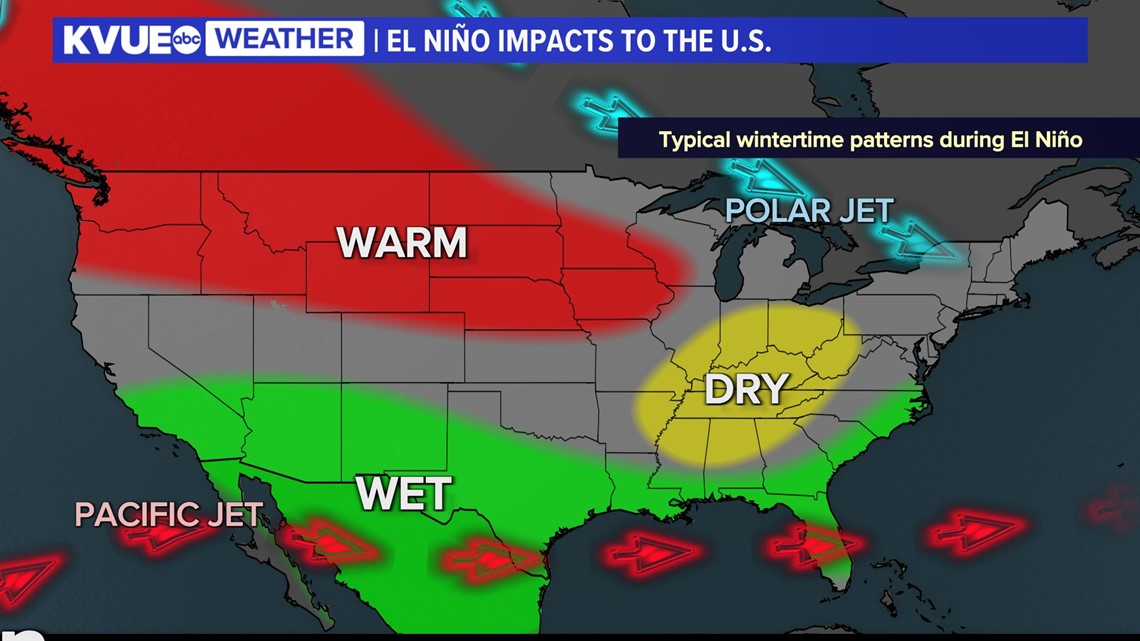
Below you can see the seasonal winter rainfall outlook from the National Oceanic and Atmospheric Administration (NOAA). NOAA is calling for above-average rainfall in Central Texas, and perhaps an even wetter winter for southeast Texas and parts of the Gulf Coast.
Here at KVUE, we agree with this forecast for above-average rainfall and we want to go a little farther breaking down the numbers.

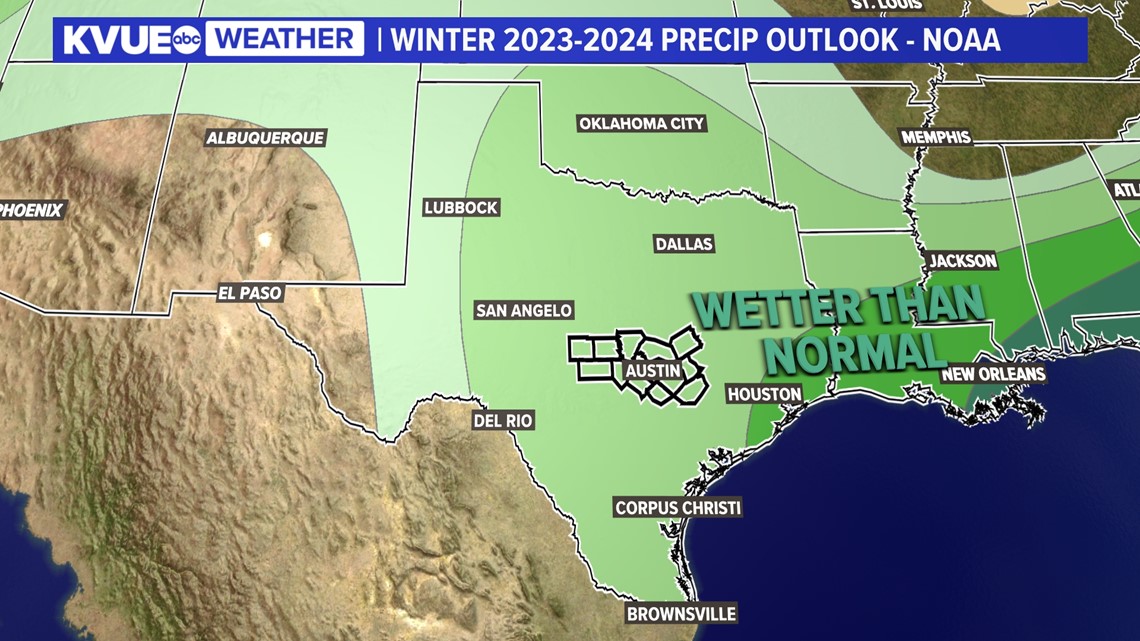
When looking at a seasonal forecast, it is always best to start with the baseline. The average meteorological winter (December, January and February) produces 7.25 inches of rainfall for Austin. When you single out El Niño winters, of which there have been 25 since 1950, that average increases to 7.85 inches.
However, this winter we are not just expecting an El Niño – we are expecting a moderate to strong El Niño. We can use this criteria to get an even bigger hint about the rainfall we could be looking ahead to.
When you single out the years of moderate to strong El Niños – there have been 12 since 1950 – you find that the average winter rainfall goes all the way up to 9.25 inches. This is the neighborhood that we could be in for this winter.

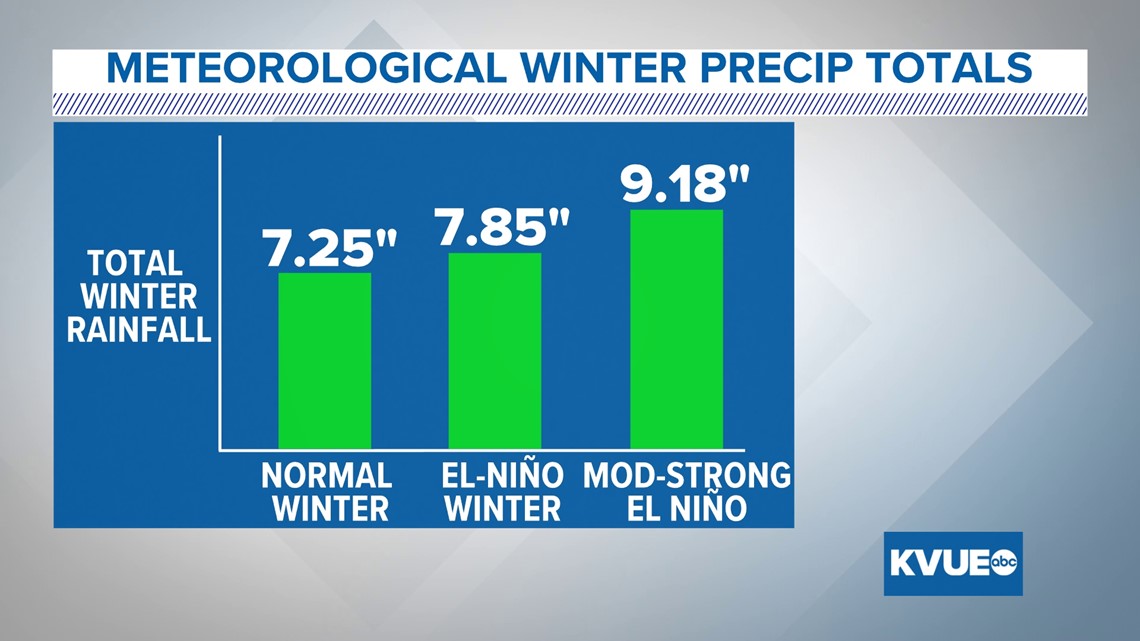
We continue to hope for rain to alleviate our ongoing drought. Through this winter, we expect at least continued improvement in our drought and perhaps even complete drought removal for some parts of Central Texas.

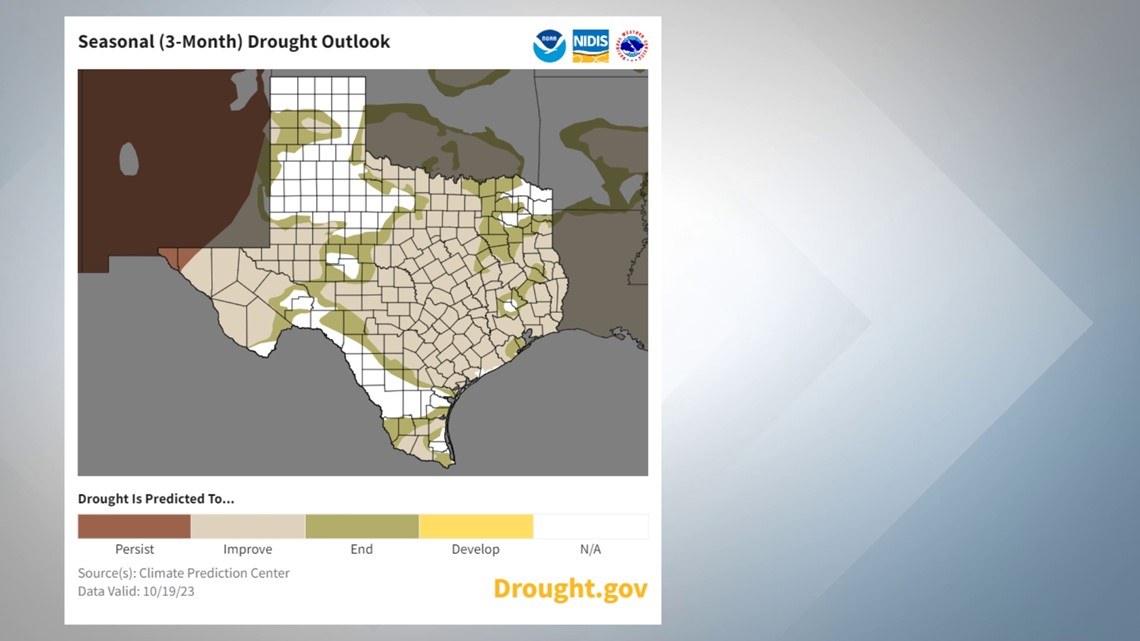
The flip side to this is the risk for flooding, which does increase during an El Niño winter. For example, you can look back to the December floods of 1991 that brought Lake Travis to its all-time highest level of 710.4 feet on Christmas Day 1991. This happened during an El Niño year.
In addition, the December floods of 1994 and the January floods of 2007 were also during El Niño winters.

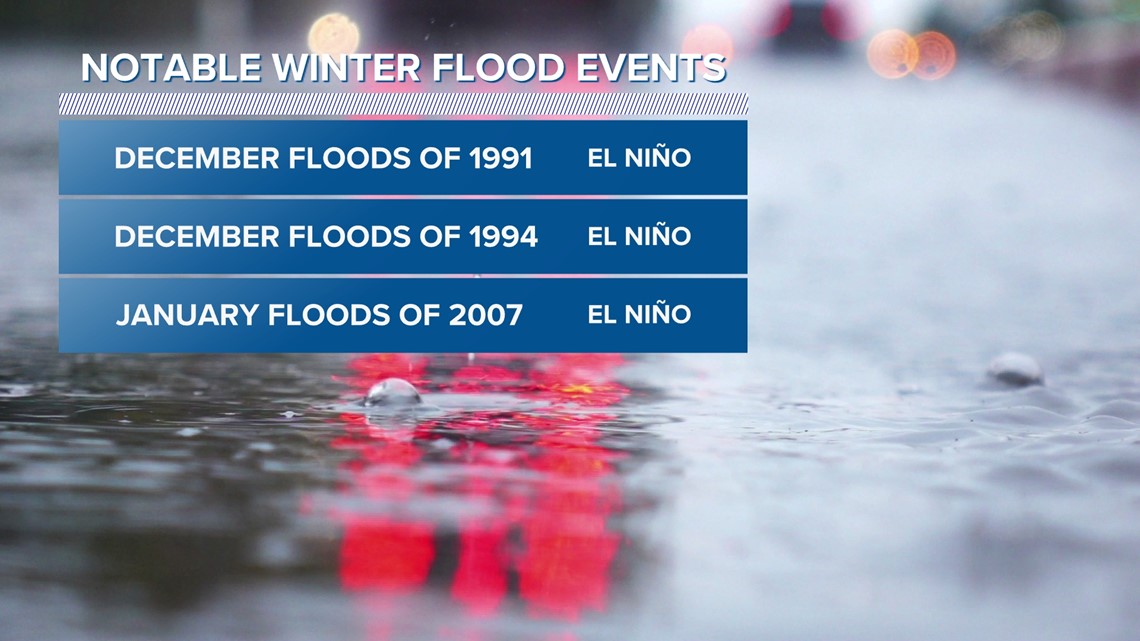
In summary, we expect slightly above-normal to above-normal precipitation this winter, primarily due to the influence of El Niño. Of the 12 winters since 1950 with similar moderate to strong El Niños, 50% saw winter rainfall between 5.6 inches and 10.1 inches, with an average of 9.2 inches of rainfall. This is the range we expect to be in for this winter.

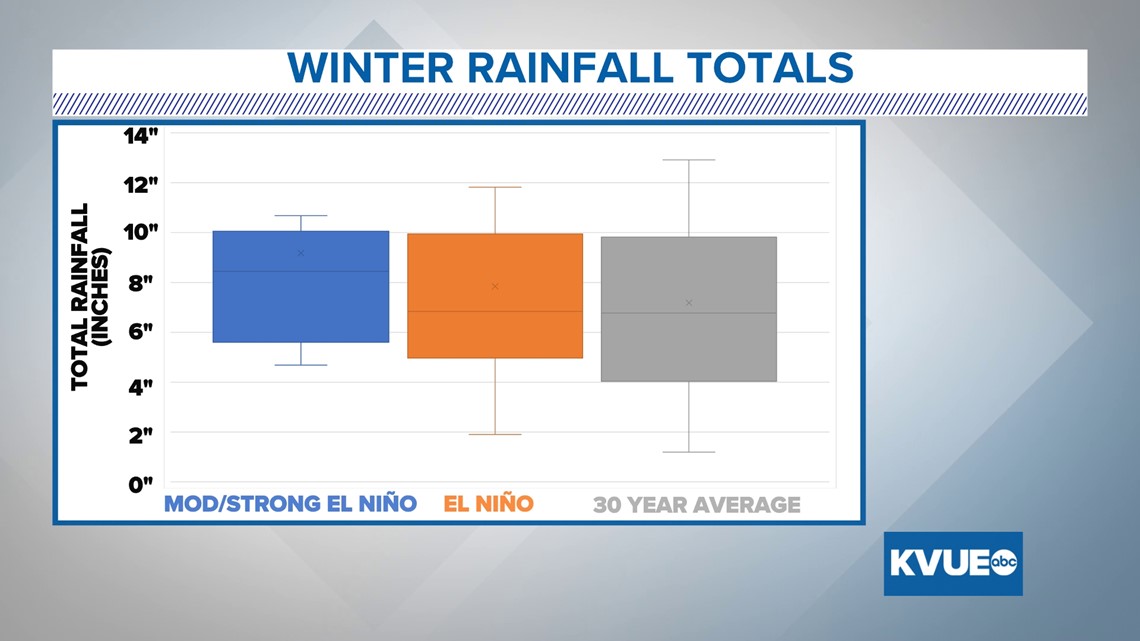
Seasonal forecasting is never a sure bet, but this winter, we see signs pointing towards above-average rainfall, perhaps similar to the winter of 2018-2019 and 2009-2010. We also expect an increased risk for flooding.
In addition to looking ahead to our winter rainfall, we will also be looking ahead to our winter temperature outlook, as well as our chance for snow or freezing rain, in the coming weeks. Be sure to keep an eye out for future installments of the 2023-2024 KVUE Winter Forecast.

